The clams that grow along the California coast are different than those in New England – and require different preparation from what is commonly cited in true New England Clam Chowder recipes. Our clams are too fat to completely close their shells, so it’s easy to slice through them and clean the meat before cooking (they should still be kept alive until ready to clean). Which is convenient, since we probably don’t want to cook and definitely don’t want to eat their guts, due to the very slight possibility of very nasty toxins accumulating there. Remember – always check the California’s Shellfish Biotoxin Hotline before harvesting wild clams. Farmed, store-bought clams must be tested for these toxins, so don’t pose this risk.
The downside of not cooking the clams whole is we don’t produce the clam broth that is called for in traditional recipes. You can buy clam juice from the store – but something doesn’t feel right about pouring store-bought clam juice over my fresh, wild caught clams. I opted to just use water – and I my chowder was not lacking in the flavor department. Alternatively, you can use vegetable broth or another homemade seafood broth.
Try to get the other ingredients from local farms and suppliers to really do justice to all the effort that was put in to harvesting the local clams.
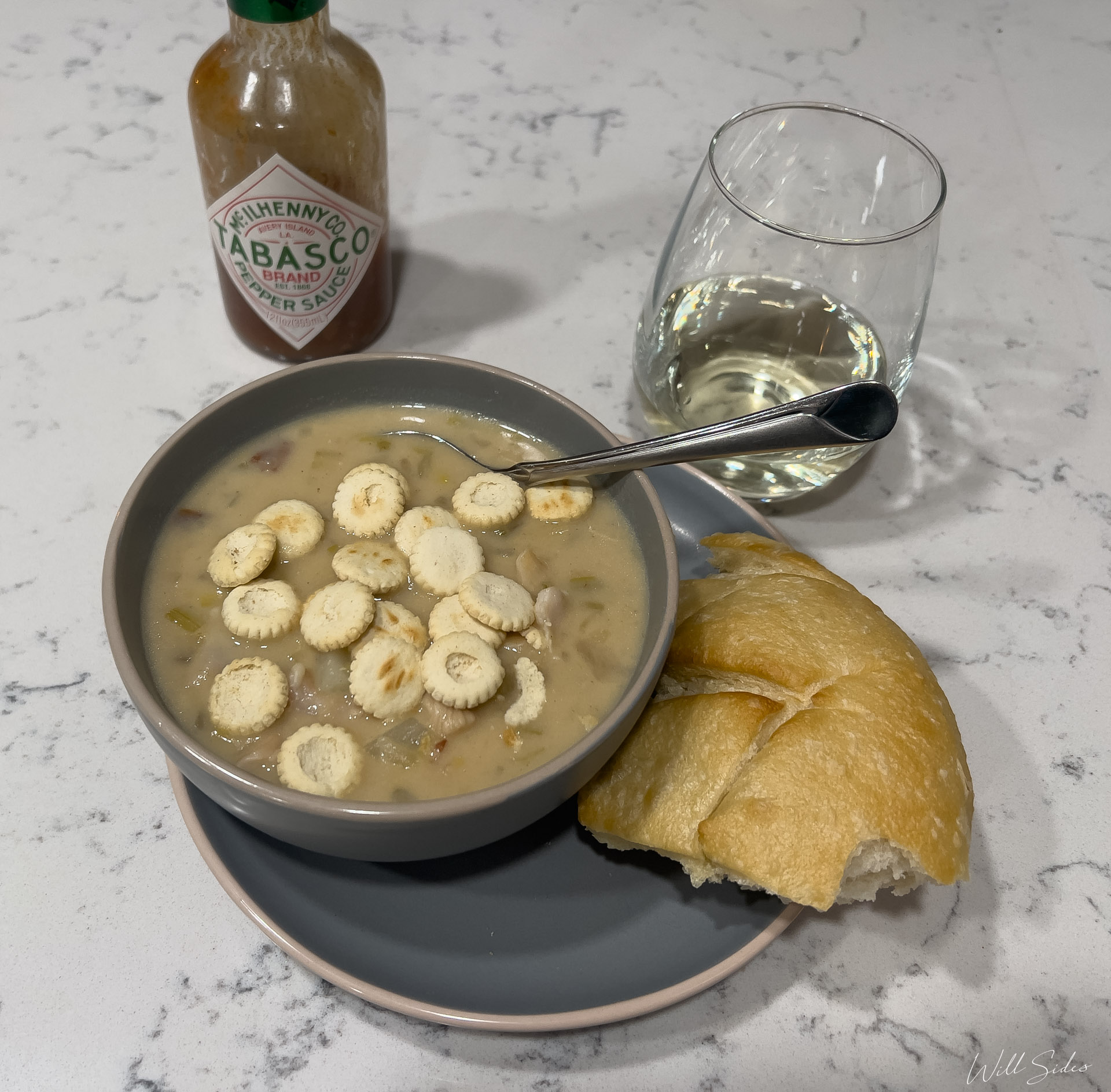
Clam Chowder
A California take on New England Clam Chowder. In this region the clams are weirder and a sourdough loaf is a requirement.
Ingredients
Clams – Gaper, Butter, or Geoduck – wild caught
Bacon or salt port, diced
Butter
Flour
Sweet onion, celery, leek, and/or fennel bulb, diced
White wine
Water, vegetable broth, or clam juice
Russet potato, diced
Salt and pepper
Heavy cream
Oyster crackers and sourdough bread, for serving
Directions
- Cleaning the Clams
- Clean the wild-caught clams. Start by slicing through the two abductor muscles to open the shell. Pull out the meat, discarding the guts. All the light-colored bits are good meat – including the siphon, tongue, abductors (small ‘scallops’), and the strips that surround the shell opening. Hint: Fresh clams are safe to eat raw, and the small ‘scallop’ muscles, thinly sliced, are a real treat for the chef
- Butterfly the siphon length-wise, splitting open the two hollow tubes running through it. Thoroughly rinse all the meat with water.
- Gapers have a hard, dark colored, thumbnail-shaped bit on the tip of the siphon that must be cut off. The dark skin must also be peeled off – this is easiest after blanching in boiling water for a few seconds
- Slice all the clean meat into small, bite-sized strips
- Making the Chowder
- Saute bacon over low heat to render fat and crisp up
- Once bacon is rendered, add butter and melt
- Add the diced allums, saute until translucent
- Add flour to make a roux. Cook the roux, but don’t let it get dark
- Deglaze with the white wine, cook off the alcohol, then add liquid and bring to a slow simmer
- Separately, boil the potatoes until just tender. Cooking them separately keeps the starch from thickening the chowder too much. I prefer to thicken with roux, as I think this can provide a deeper, more complex flavor profile. Set aside.
- Add the prepared clam during the last 5 minutes of simmering the chowder
- Remove the chowder from the heat. Add the cooked potatoes and heavy cream (about 1 cup for a typical dutch-oven worth of chowder). You may choose to temper the heavy cream to prevent breaking the emulsion
- Serve with oyster crackers and a piece of sourdough bread

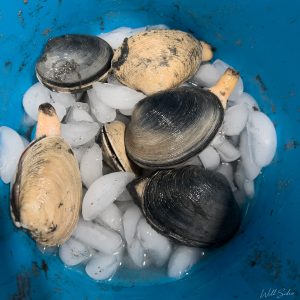
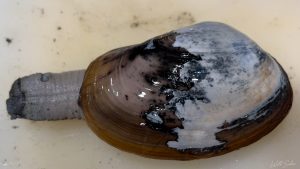
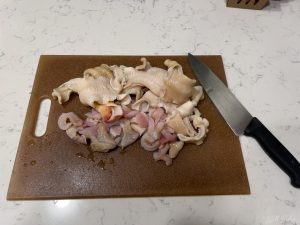
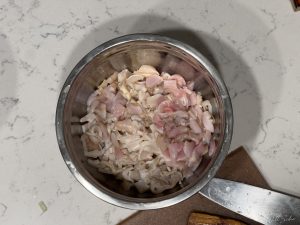
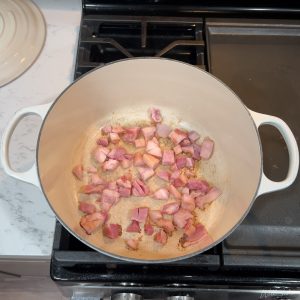
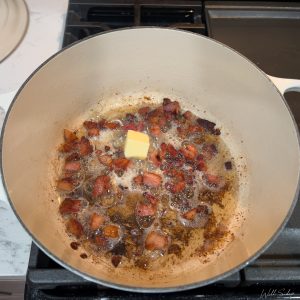
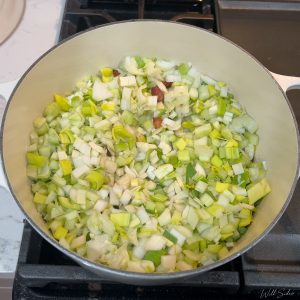
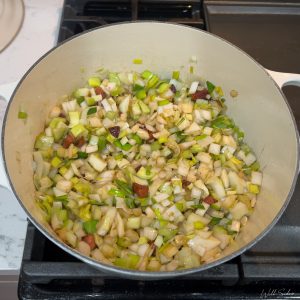
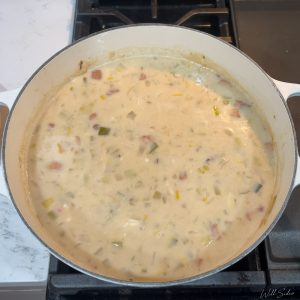
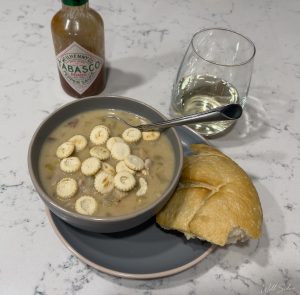
Leave a Reply
You must be logged in to post a comment.